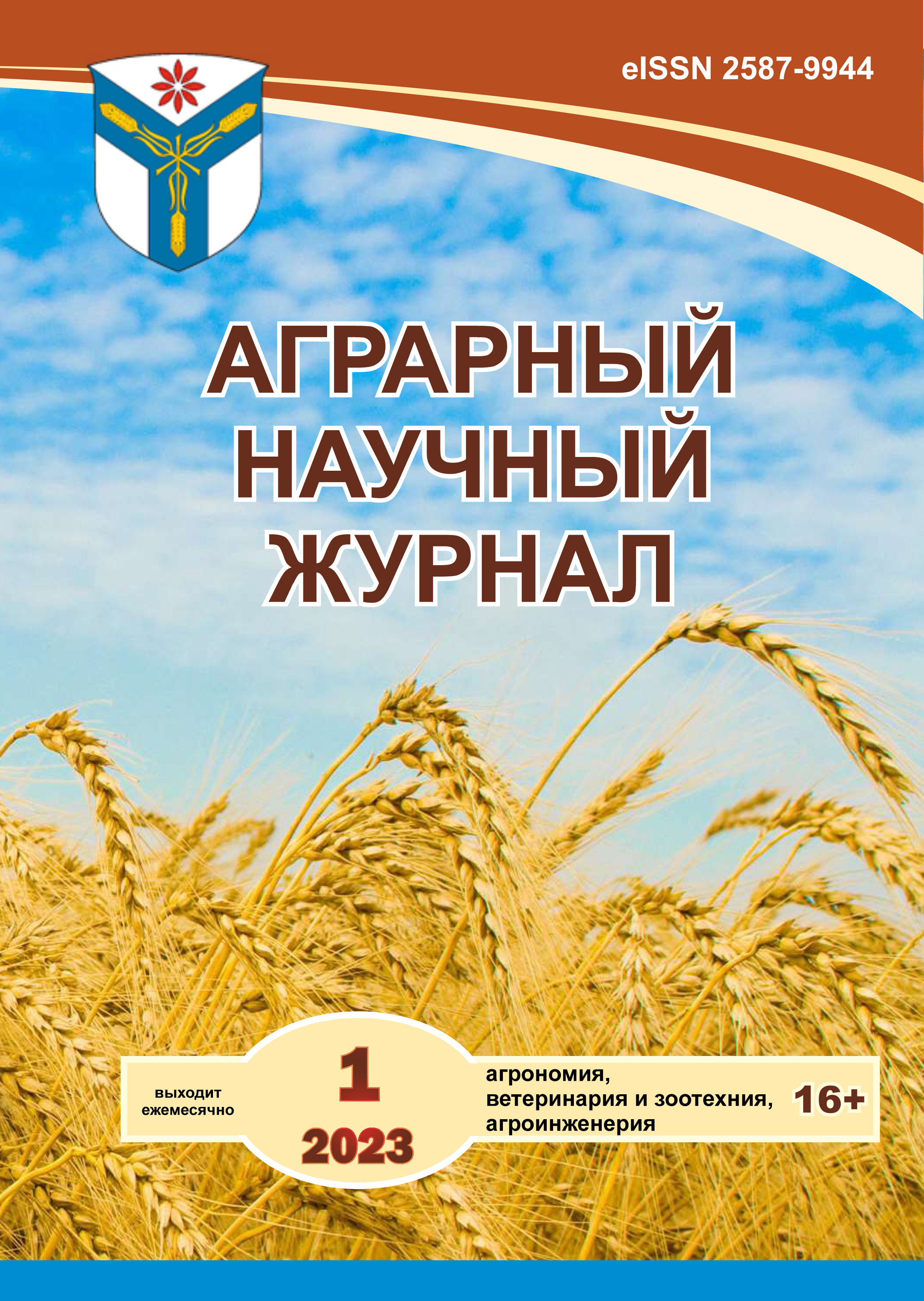Optimal parameters of the tractor and arable unit for various optimization criteria
DOI:
https://doi.org/10.28983/asj.y2023i1pp155-160Keywords:
tractor, arable unit, optimization of parameters, total energy consumption, crop loss, carbon dioxide emissionAbstract
The article is devoted to identifying the optimal values of the main parameters of the tractor (its weight and engine power) and the unit (the width of the plow capture and the working velocity of the unit) according to various optimization criteria: minimum straight and indirect total energy costs taking into account the energy of a lost harvest; Minimum emission of carbon dioxide at the stages of manufacture and operation, taking into account the amount of carbon dioxide, which could be absorbed from the atmosphere, lost during the work of the unit, crops; maximum aggregate performance in one hour of time The minimum fuel consumption per ha was treated as an area of the area and the maximum traction tractor efficiency. According to the results of computational experiments using mathematical models of the arable unit, it was revealed that the optimal values of the main parameters of the tractor and the unit coincide according to the first three optimization criteria and for the selected working conditions are: the weight of the tractor 130 kN; engine power 398 hp; the width of the capture of the unit is 5.25 m; working speed is 7.5 km / h.
Downloads
References
Уштык, Д. В. Критерии оптимизации параметров почвообрабатывающих агрегатов и тракторов // Ресурсосберегающие технологии в агропромышленном комплексе России: материалы II Междунар. науч. конф. Красноярск, 2022. С. 322-326.
Дементьев А. М. Обеспечение энергосбережения в технологических процессах обработки почвы путем оптимального проектирования комбинированных агрегатов блочно-модульной структуры: автореф. дис. … канд. техн. наук. СПб., 2011. 19 с.
Погуляев, Ю. Д. Повышение производительности машинно-тракторных агрегатов на основе оптимального и квазиоптимального управления энергетическими режимами: автореф. дис. … канд. техн. наук. Челябинск, 2006. 39 с.
Филин А. В., Филин В. А. Выбор машинно-тракторных агрегатов по максимуму производительности и минимуму эксплуатационных затрат // Энергоэффективные и ресурсосберегающие технологии и системы: межвуз. сб. науч. трудов. Саранск, 2016. С. 235-237.
Никифоров А. Г., Алексеев А. В. Сравнительный анализ методик оценки эффективности машинно-тракторных агрегатов на примере пахотных работ // Научное и техническое обеспечение АПК, состояние и перспективы развития: сб. материалов Междунар. науч.-практ. конф. Омск, 2018. С. 110-113.
Сироткин С. А., Кельчевская Н. Р. Приведенные затраты: Есть ли будущее? // Вестник УГТУ-УПИ. Серия: Экономика и управление. 2008. № 3. С. 12-18.
Хафизов К. А. Оптимизация параметров и режимов работы МТА на основе энергетического анализа // Тракторы и сельскохозяйственные машины. 2006. № 7. С. 32-34.
Хафизов К. А., Хафизов Р. Н. Определение количества техники, необходимой для сельского хозяйства Татарстана // Вестник Казанского государственного аграрного университета. 2015. Т. 10. № 1(35). С. 82-88. DOI 10.12737/11384.
Khafizov C., Khafizov R., Nurmiev A., Galiev I. Optimization of main parameters of tractor and unit for plowing soil, taking Into account their influence on yield of grain crops // Engineering for Rural Development: 19, Jelgava, 20–22 мая 2020 года. Jelgava, 2020. P. 585-590. DOI 10.22616/ERDev.2020.19.TF131.
Downloads
Published
Issue
Section
License
Copyright (c) 2023 The Agrarian Scientific Journal

This work is licensed under a Creative Commons Attribution-NonCommercial-NoDerivatives 4.0 International License.








